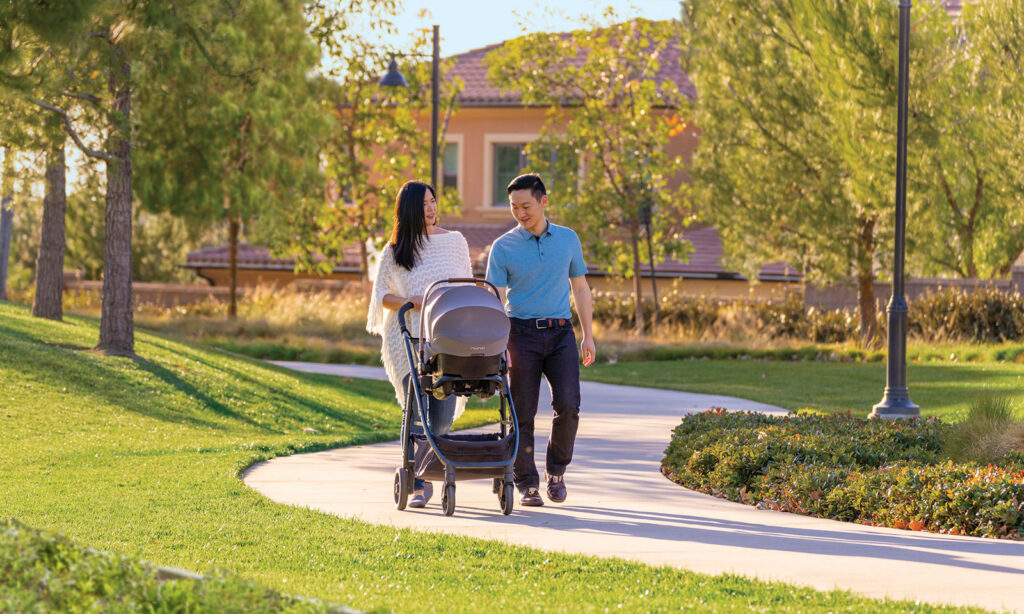The landscape architecture of Irvine is a key part of why the city is such a desirable place to live.
Pick a place in Irvine, any place – designed by Irvine Company. Go there, look around and gauge how much green you see. Mature trees shading the medians of roads, an abundance of plants native to California and Mediterranean climates, parks with acres of green grass and landscaped trails and walkways connecting it all.
None of this is by chance.
The Irvine Master Plan, which was written in the 1960s, promised that “Irvine will be a place where both nature and people will thrive.” Irvine Company followed that vision by designing open spaces and landscaping into every village and street, planting hundreds of thousands of trees in its residential villages, 14,000 trees in its retail centers, 40,000 trees in its office campuses and 51,000 trees in its apartment communities.
Not just decorative
And with every new village, retail center or park, more of the natural world is woven into the fabric of the city. That’s because Irvine Company’s master planners believe now, and have always believed, that trees, parks and green spaces are as important as the homes, roads, retail centers and offices in the city.
“For us, landscape architecture is structural, not just decorative,” says Rob Elliott, senior vice president for planning and design at Irvine Company. “When we first plan a new village or other project, our architects, civil engineers and landscape architects work together from day one, so landscape design is never an after-thought.”
Eastwood
Village greens
While traveling to or through Irvine, the experience of nature is always part of the journey. No matter the route, from bike path to interstate, the thoughtfulness and planning of the natural environment is there to discover. When one thinks of open space and the Irvine Master Plan, large swaths of acreage come to mind: Bommer Canyon, Mason Park, Laguna Wilderness. Half of the 93,000-acre Irvine Ranch is now permanently open space, thanks to generous and far-sighted donations by the Company and owner.
But leaving smaller spaces open and green is also a crucial reason Irvine is well-loved and livable. One of the reasons the city “works” is because of the spaces between things. It is not built lot line to lot line. There is room to breathe.
“Land is our most precious asset and a finite resource,” Elliott says. He points out that the Master Plan sets aside what would otherwise be buildable land for landscape design. “We want a village to look a particular way. That means we have to devote potentially developable square footage to landscape, such as a 50-foot village edge. The space we keep open in and around our villages could have gone to the bottom line, but we design it as landscape so it remains in perpetuity.”
That’s not the way most development off The Irvine Ranch happens. Take a drive through cities to the north for a reminder of what unplanned growth looks like, with miles of block walls and tracts built right to the street.
“Because landscape is essential in establishing the character of the city and villages, and is one of its hallmarks, our company cares deeply about landscape architecture,” Elliott says.





